Assessing 440 Stainless Steel: Performance and Suitability for Knives
- February 2, 2024
- 0 comment
When it comes to the art of knife making, 440 stainless steel is a true standout. It’s famous for its perfect mix of strength, ability to resist rust and great value. This article takes a closer look at what 440 stainless steel is all about, exploring its composition, the different types available, and how well it performs in creating top-notch knives. Let’s dive into why it is a top pick for both knife makers and enthusiasts and how it stands out in the craft of making quality blades.
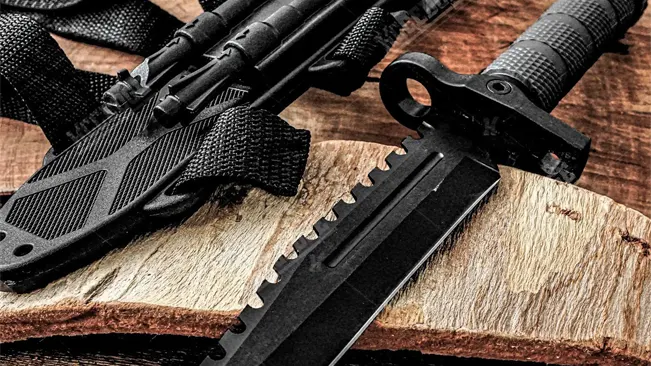
Detailed Composition
440 stainless steel is a martensitic alloy, which means it is capable of being hardened by heat treatment. The alloy’s distinct properties are primarily due to its chemical makeup:
- Carbon: This element significantly affects hardness and edge retention. The carbon content varies among the 440 series, with 440C having the highest percentage, contributing to its superior hardness and wear resistance.
- Chromium: Chromium is crucial for corrosion resistance. All 440 variants have a high chromium content, typically around 16-18%, which enables the formation of a protective oxide layer on the steel surface.
- Molybdenum: This element enhances the steel’s strength and hardness upon heat treatment. It also improves the steel’s corrosion resistance and toughness.
- Manganese and Silicon: Both elements are used as deoxidizers in steel and contribute to its strength and durability. Manganese improves the hardenability of the steel, while silicon adds to the strength without significantly affecting its brittleness.
440 Series Variants
The 440 series is differentiated into three main grades: 440A, 440B, and 440C. The primary distinction between these grades is their carbon content, which impacts their hardness and, consequently, their application in knife-making.
440A
With the lowest carbon content of the three (typically between 0.65% and 0.75%), 440A offers a good balance of corrosion resistance and edge retention. It is relatively easy to sharpen and is often used in budget-friendly or entry-level knives.
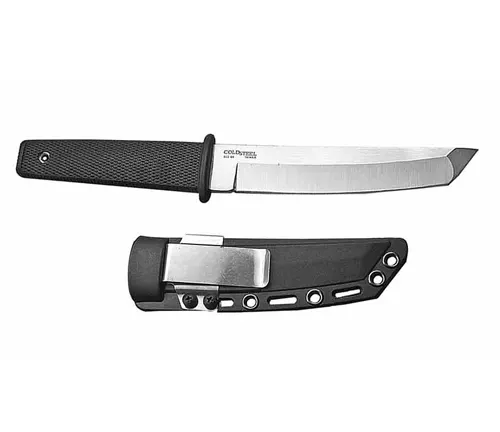
440B
Slightly more carbon content than 440A (typically between 0.75% and 0.85%), 440B strikes a balance between 440A and 440C. It offers improved hardness and wear resistance while maintaining good corrosion resistance. 440B is less common than the other two variants.
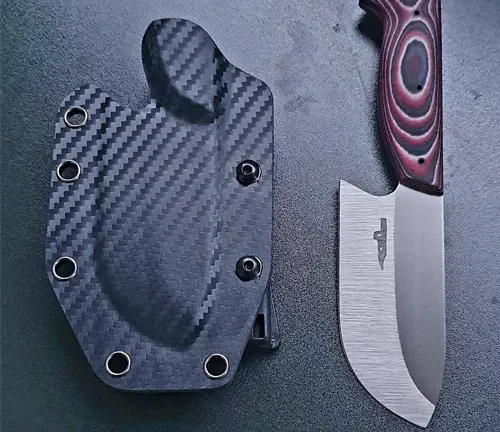
440C
The most carbon-rich of the series (typically between 0.95% and 1.20%), 440C is prized for its high hardness, excellent wear resistance, and good corrosion resistance. It is the preferred choice for high-quality knives that demand superior edge retention and durability. However, its higher hardness means it can be more challenging to sharpen than 440A and 440B.
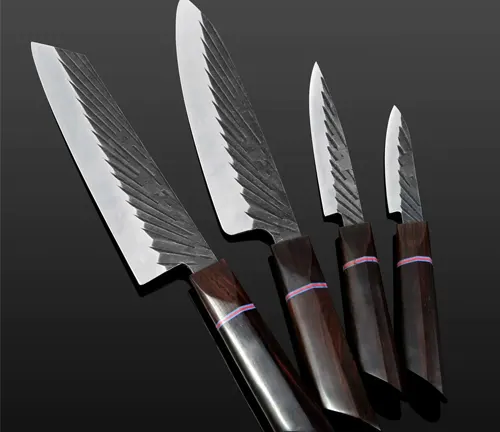
Impact on Knife-Making
The choice among 440A, 440B, and 440C depends on the knife’s intended use, the desired balance between hardness and corrosion resistance, and the maker’s or user’s preference for maintenance and care. While 440C is favored for premium knives due to its superior performance characteristics, 440A and 440B are still suitable for many applications where ease of sharpening and corrosion resistance are prioritized.
Properties and Performance
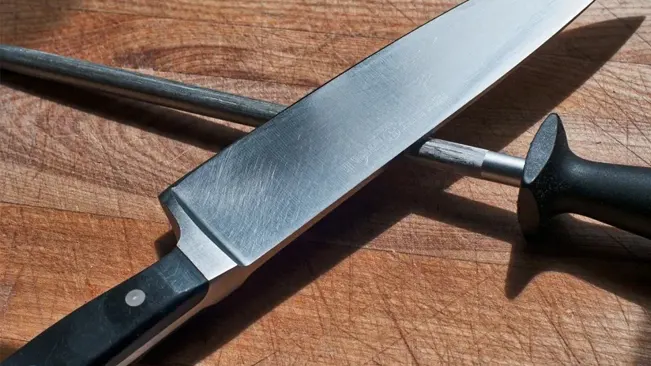
Hardness: The hardness of a steel determines its ability to resist deformation. In the case of 440 stainless steel, particularly the 440C variant, hardness is a key feature. With a Rockwell hardness typically between 58-60 HRC (and sometimes higher), 440C’s hardness is among the highest in the 440 series. This high level of hardness is achieved through a combination of its high carbon content and heat treatment processes. The result is a blade that can withstand significant stress and wear without deforming.
Wear Resistance: Directly correlated with hardness, the wear resistance of 440 stainless steel makes it an excellent choice for knives that will be subjected to heavy use or abrasive conditions. The steel’s ability to resist wear ensures that the knife remains functional over time, retaining its shape and structure. This is particularly important for cutting tools that require a sharp, durable edge to perform efficiently.
Corrosion Resistance: Chromium plays a pivotal role in the corrosion resistance of 440 stainless steel. The minimum of 16-18% chromium content in 440 series steels enables the formation of a passive oxide layer on the steel’s surface, which protects the material from various forms of corrosion. This characteristic is critical for knives used in moist or acidic environments, such as kitchen knives or diving knives, as it ensures the longevity of the blade even in challenging conditions. While 440C’s slightly higher carbon content might slightly reduce its corrosion resistance compared to 440A and 440B, it still offers more than adequate protection for most applications.
Sharpening and Edge Retention: One of the trade-offs with high hardness steels like 440C is the difficulty in sharpening. The very properties that give the steel its excellent wear resistance and edge retention can also make it challenging to restore a sharp edge once dulled. However, with the appropriate sharpening tools (such as diamond or ceramic sharpeners) and techniques, 440C blades can be effectively sharpened to a razor-like edge. The advantage of this high hardness is superior edge retention, meaning the knife remains sharp for longer periods of use, reducing the need for frequent sharpening. This makes 440 stainless steel knives especially valuable for users who require a reliable, sharp edge over extended use.
Application in Different Knife Categories
Kitchen Knives: The culinary world demands knives that not only maintain a sharp edge but also resist the corrosive effects of food acids and moisture. 440A and 440B, with their excellent corrosion resistance, are often used in kitchen knives for everyday home cooks and professional chefs who value longevity and ease of maintenance. The slightly lower hardness level of 440A and 440B compared to 440C is often considered an acceptable trade-off for superior corrosion resistance and ease of sharpening.
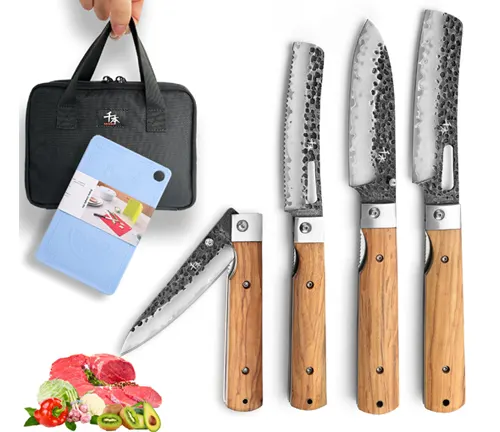
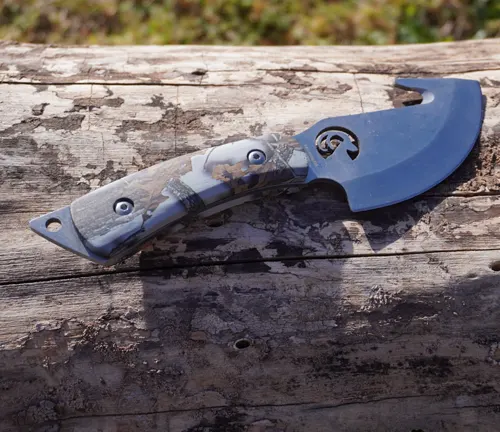
Outdoor Knives: For outdoor enthusiasts, hunters, and campers, knives must perform under a variety of conditions, often being exposed to the elements. The need for a durable, wear-resistant blade that can maintain its edge through various tasks makes 440C a popular choice. Its higher hardness and good corrosion resistance ensure that outdoor knives made from 440C can withstand the rigors of outdoor use, from cutting rope to processing wood or game.
Tactical Knives: Tactical and survival knives prioritize durability, edge retention, and the ability to perform under stress. 440C’s superior hardness and wear resistance make it an ideal candidate for these applications. Tactical knives benefit from 440C’s ability to take and hold a sharp edge, providing reliability when it matters most. The steel’s decent corrosion resistance also ensures that these knives can endure harsh conditions without significant maintenance.

Comparisons with Other Knife Steels
| Feature | 440A | 440B | 440C | S35VN | 15N20 | D2 | 1095 |
|---|---|---|---|---|---|---|---|
| Alloy Type | Stainless steel | Stainless steel | Stainless steel | Stainless steel | High-carbon, low-alloy steel | High-carbon, high-chromium steel | Carbon steel |
| Carbon Content | 0.75% | 1.00% | 1.10% | 1.40% | 1.50% | 1.20% | 0.95% |
| Hardness (HRC) | 55-58 | 56-59 | 58-60 | 58-62 | 58-62 | 60-63 | 58-62 |
| Edge Retention | Good | Very good | Good | Excellent | Very good | Excellent | Excellent |
| Toughness | High | High | High | Very good | Good | Good | Moderate |
| Corrosion Resistance | Excellent | Very good | Very good | Excellent | Poor | Fair | Poor |
| Ease of Sharpening | Very easy | Easy | Easy | Difficult | Moderate | Moderate | Easy |
| Price | Low | Low | Moderate | High | Low | Moderate | Low |
| Best Use | Budget knives, kitchen knives | Everyday carry, budget knives | EDC, outdoor knives, kitchen knives | EDC, high-performance knives | Hunting, EDC | Hard-use knives, EDC | Everyday carry, bushcraft, survival |
Challenges and Considerations
Despite its advantages, there are misconceptions about 440 stainless steel, particularly regarding its edge retention and sharpening difficulties. While it is true that 440C can be challenging to sharpen, modern sharpening tools and techniques have mitigated this issue. Maintenance and care are crucial for maximizing the performance and lifespan of 440 stainless steel knives, including regular sharpening and proper storage.
Conclusion
440 stainless steel offers a compelling combination of hardness, corrosion resistance, and wear resistance, making it a suitable material for a wide range of knives. While it may not match the performance of some of the more premium steels in every aspect, its balanced properties and cost-effectiveness make it an excellent choice for both everyday and specialized applications. By understanding its characteristics and how to properly maintain it, users can fully benefit from the advantages that 440 stainless steel knives have to offer.
10 FAQs about 440 Stainless Steel
- What makes 440 stainless steel a good choice for knife making?
440 stainless steel is prized for its optimal balance of hardness, corrosion resistance, and affordability. Its high carbon and chromium content provide a strong, durable blade that retains sharpness while resisting rust and wear. - How does the carbon content in 440 stainless steel affect its performance?
The high carbon content in 440 stainless steel increases the steel’s hardness, enhancing its ability to maintain a sharp edge. However, it can also make the steel more challenging to sharpen once dulled and potentially more brittle if not tempered correctly. - What are the differences between 440A, 440B, and 440C stainless steel?
440A: Has the lowest carbon content, making it the least hard but most corrosion-resistant of the three.
440B: Offers a balance between 440A and 440C with moderate hardness and corrosion resistance.
440C: Contains the highest carbon content, providing the greatest hardness and wear resistance but slightly less corrosion resistance compared to 440A and 440B. - Can 440 stainless steel knives withstand harsh environments without rusting?
Yes, 440 stainless steel knives can withstand moist and acidic environments better than many other steels due to their high chromium content. However, proper maintenance is still necessary to prevent corrosion over time. - How do the mechanical properties of 440 stainless steel contribute to its suitability for knives?
The mechanical properties of 440 stainless steel, including its tensile strength, toughness, and wear resistance, make it suitable for knives by ensuring durability, a long-lasting sharp edge, and resistance to breaking or chipping under normal use. - Is 440 stainless steel easy to sharpen?
440 stainless steel can be more challenging to sharpen than softer steels due to its hardness, especially in the 440C variant. However, with the right tools and techniques, it can be effectively sharpened to a fine edge. - How does 440 stainless steel compare to other knife steels like VG10 or S30V?
While 440 stainless steel offers a good balance of hardness and corrosion resistance at a lower cost, steels like VG10 and S30V provide superior edge retention and toughness but at a higher price point. The choice depends on user preferences and the specific needs of the knife’s application. - What types of knives are best suited for 440 stainless steel?
440 stainless steel is versatile and can be used for various types of knives, including kitchen cutlery, outdoor knives, and tactical blades, with the choice of 440A, 440B, or 440C depending on the required balance of edge retention and corrosion resistance. - How should I care for my 440 stainless steel knife to maintain its performance?
Regular cleaning, drying after use, and occasional oiling are key to maintaining the corrosion resistance and overall performance of a 440 stainless steel knife. Proper storage and using the knife for intended tasks will also prolong its life. - Where does 440 stainless steel stand in terms of cost compared to other knife materials?
440 stainless steel is generally more affordable than high-end steels like VG10 or S30V, making it an excellent choice for those seeking a balance between quality and cost. Its performance-to-price ratio makes it attractive for both everyday and professional use.
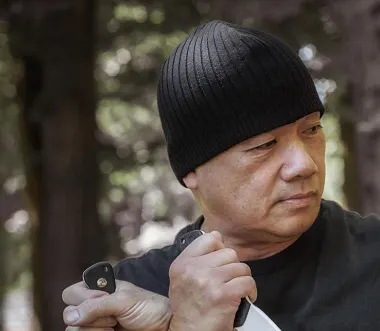
Kerith Simon
As an expert with over ten years of dedicated experience in knife defense, my professional journey is anchored in a profound commitment to the safety and empowerment of individuals through specialized education. My expertise is not only grounded in practical self-defense techniques but also extends to a scholarly understanding of knife functionality, which I have meticulously documented in my authoritative series, This work stands as a testament to my deep engagement with the subject, offering readers critical insights into the nuances of knife selection and usage across various contexts. My approach to teaching and content creation is informed by a rigorous methodology and a continuous pursuit of knowledge, ensuring that the strategies and insights I provide are both effective and scientifically sound. Through a combination of hands-on workshops, comprehensive seminars, and well-researched publications, I strive to elevate the standard of knife defense education, making it accessible and reliable for those seeking to enhance their security and proficiency in this essential skill.

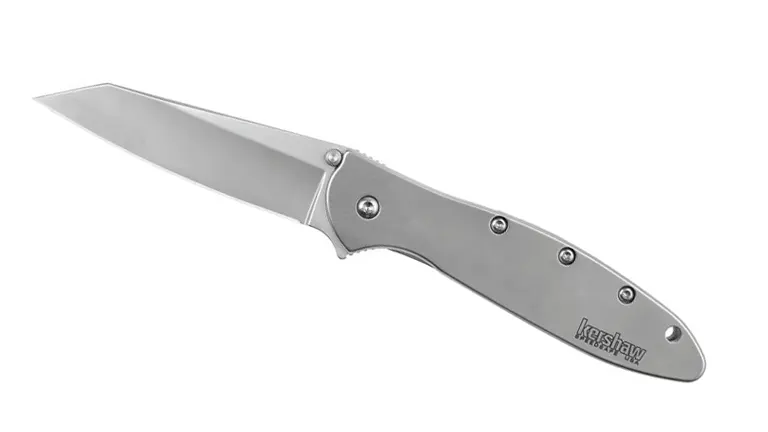
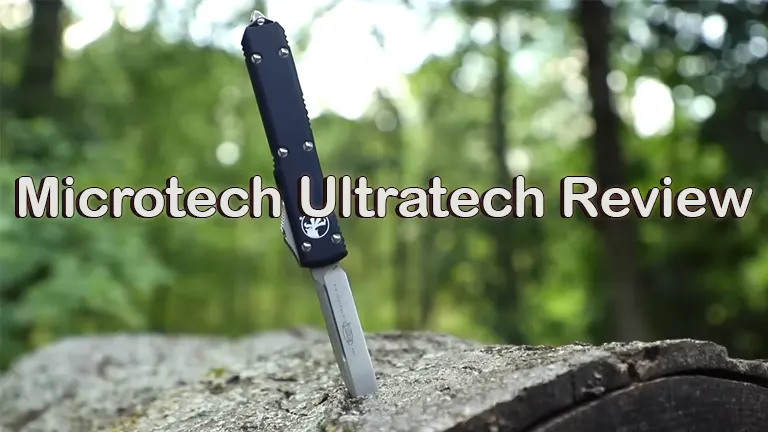
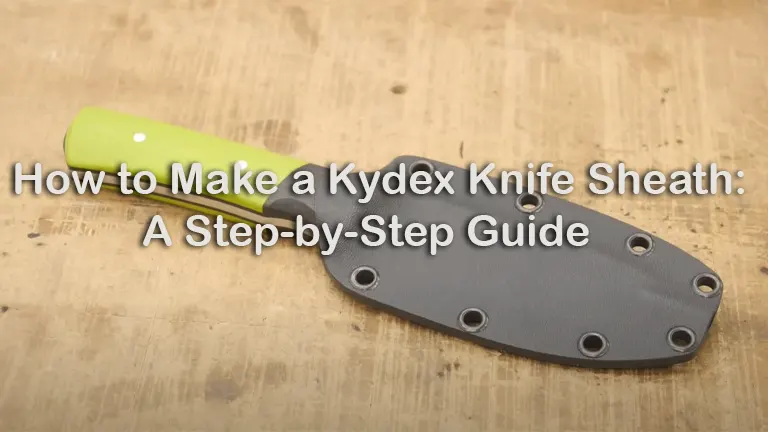
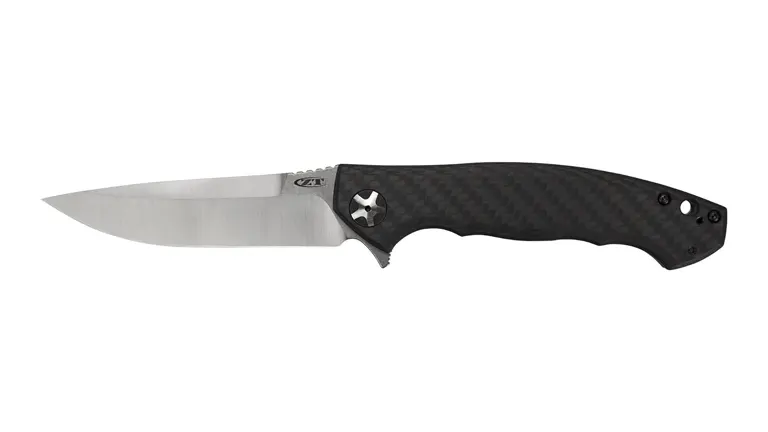



Leave your comment